When you have pain in the groin or inner thigh, it’s generally the adductor muscles that are strained or stretched. This group of muscles on the inside of the thigh is responsible for pulling the thighs inwards, the muscles attach to the pelvic bone. Is it painful when you put your weight on one leg? Does standing for long periods, running, and spreading one leg cause problems? These could be signs of an adductor injury. Always see a professional for proper diagnosis. However, you can very well support the adductor muscles with the tape application described here, if the muscles are only strained or stretched.
How to tape groin pain
Tips for a good thigh taping application:
- Is the cause of the complaint or pain clear?
- Check if there any contraindications for not taping.
- Before you start taping, carefully read the instructions.
- Choose a colour of tape, any colour that fits your mood!
- Round of all the edges to prevent peeling.
- Do not stretch the tape at the beginning and the end.
- Rub the tape well for adhesion. Heat activates the adhesive layer.
- Showering or swimming is possible, pat the tape dry after it gets wet. Do not rub it hard.
- It is easier to remove the tape with body or massage oil.

Christina’s advice when taping your thigh
In the self-taping instructions, I have chosen taping applications that are easy to apply yourself. In order to make this treatment safe, I give practical tips, which you should take into account before, during and after a tape treatment. They are based on my years of practical experience. If the complaints persist, always consult a therapist or doctor.
Instructions
Tape
Shape:I-Tape.
Number of strips: 3.
Technique: muscle technique (light pull).
Measuring and cutting the tape
Step 1:
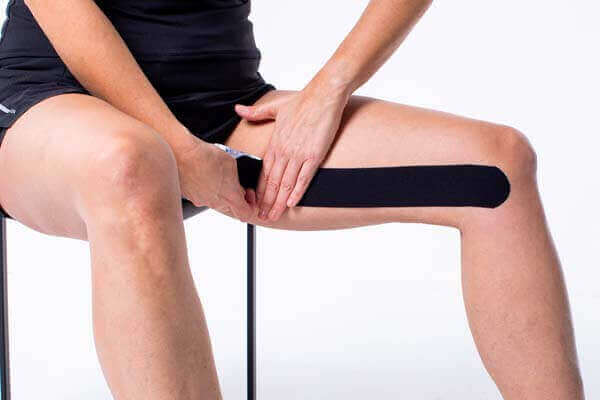
- Sit on a chair with your legs slightly apart and measure the length of the tape from the bottom of the knee to the inside of the thigh to the groin.
- Cut two tapes of this length.
- Cut a third tape of approx. 15 cm long.
Applying the tape
Step 1:
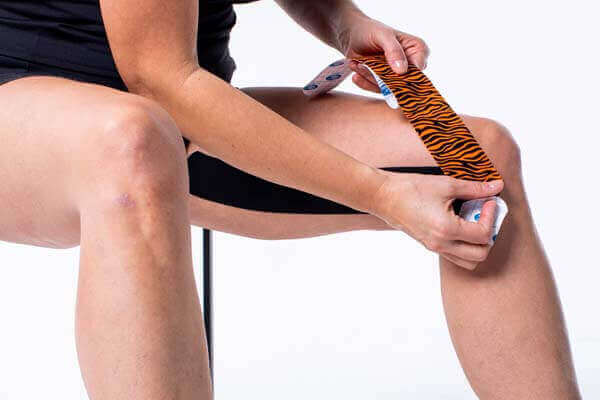
Step 2:
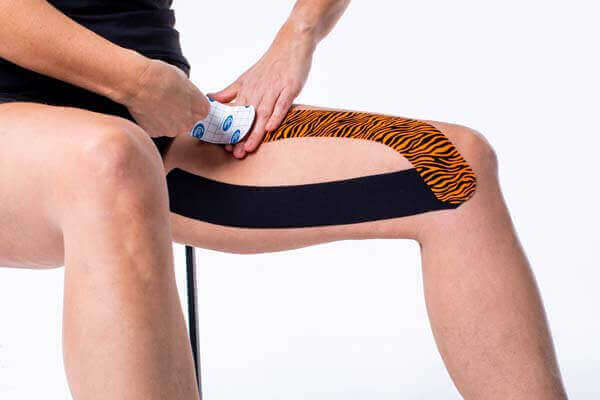
Step 3:
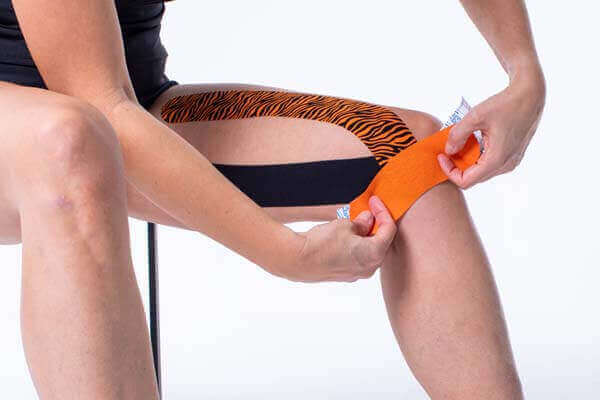
Step 4:
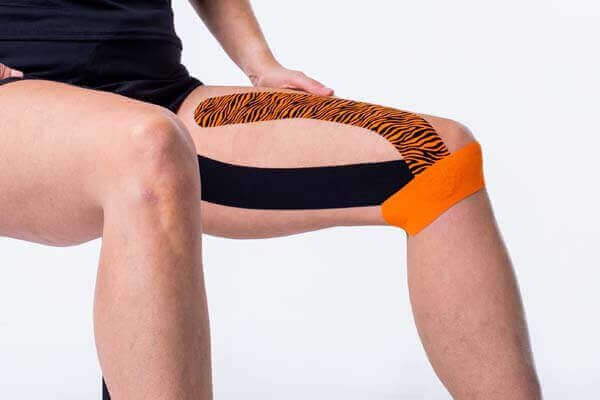
- Place the base of the first unstretched tape on the inside of the knee slightly below the kneecap.
- Run the tape with light tension along the leg over the muscle belly, up to under the pubic bone (in this area you can clearly feel the tendon strands).
- The second strip of tape is applied in the same way, ending slightly higher on the inner thigh.
- Rub the tapes well to activate the adhesive layer.
- For fixation, place an additional strip of tape below the knee without stretching it over the base of the tapes already fixed.
Popular products to tape your foot
-
MYCureTape® – 3 Rolls Kinesiology Tape – Value Pack
 $26.95
In stockSelect options This product has multiple variants. The options may be chosen on the product page
$26.95
In stockSelect options This product has multiple variants. The options may be chosen on the product page -
Book: The Ultimate Kinesiology Taping Guide
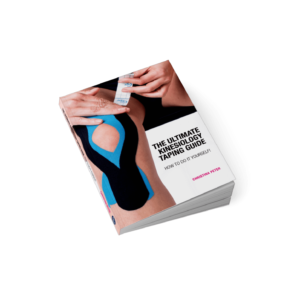 $29.95
In stockAdd to cart
$29.95
In stockAdd to cart -
CureTape® Ultimate Self-Tape Starter Kit
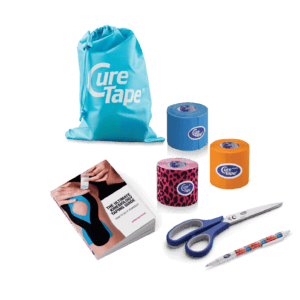 $87.95
In stockAdd to cart
$87.95
In stockAdd to cart
Learn how to tape
- 30 taping instructions for common injuries that taping can help you with
- 176 pages of clear written instructions
- 200 step-by-step instructions accompanied by photo’s, illustrations and scannable video’s through QR codes
What are you waiting for? Order your copy today!
*This book is intended for people who want to tape an injury or complaint themselves. If uncertain about the complaint, consult a physiotherapist.
THYSOL is the manufacturer of the kinesiology tape brand CureTape. As CureTape, we have been training and supplying professionals for almost 25 years. And consumers now know how to find us too! By manufacturing all our tapes in our own factory, we can guarantee the best quality!
Please note that the indicated tape applications and information on our website about the possibilities with kinesiology tape have not yet been scientifically proven. The statements and examples mentioned are based on long-term experiences of patients and trained therapists.
Contraindications not to tape: pregnancy, open wounds, broken bones, unexplained complaints, allergies and skin diseases, use of medication such as blood thinners, thrombosis and fever. Always apply tape in consultation with a specialist.






